
VITA
✨✨VITA: Towards Open-Source Interactive Omni Multimodal LLM
Stars: 1080
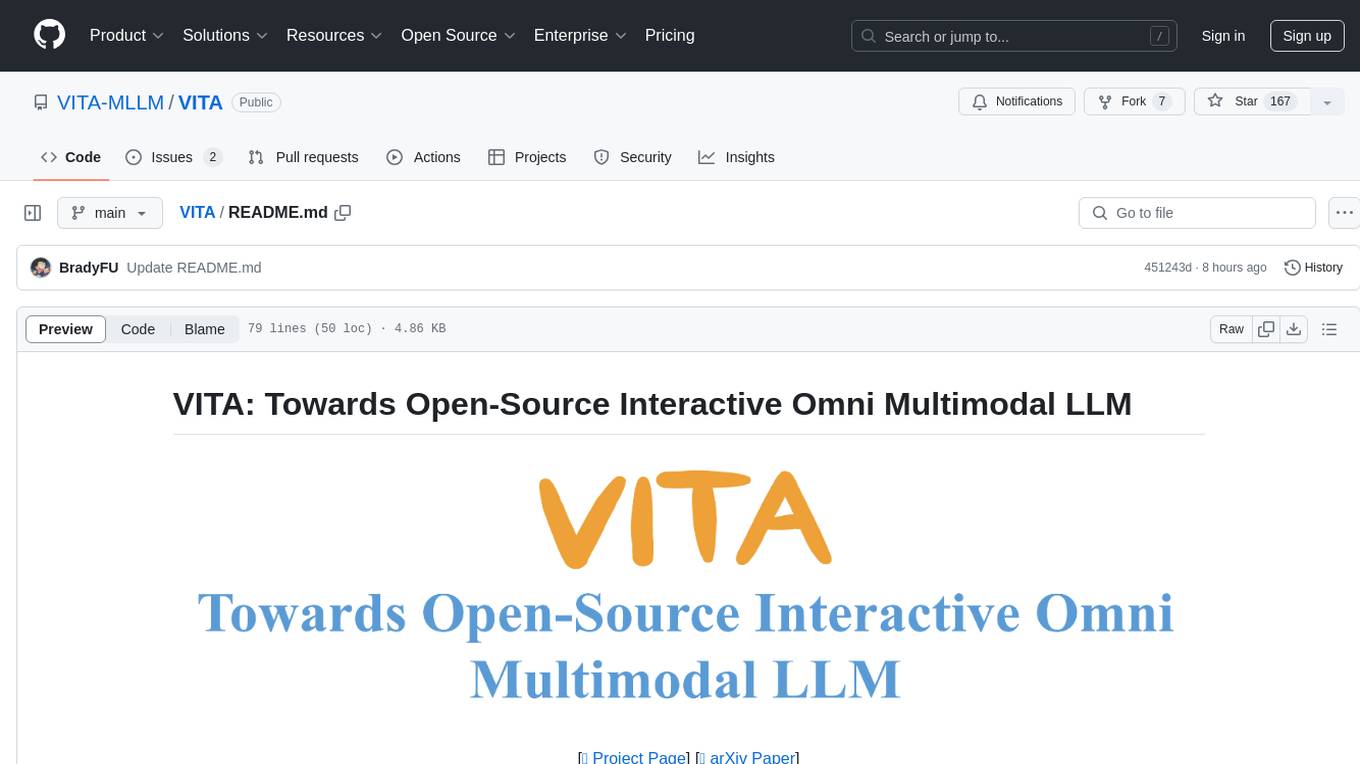
VITA is an open-source interactive omni multimodal Large Language Model (LLM) capable of processing video, image, text, and audio inputs simultaneously. It stands out with features like Omni Multimodal Understanding, Non-awakening Interaction, and Audio Interrupt Interaction. VITA can respond to user queries without a wake-up word, track and filter external queries in real-time, and handle various query inputs effectively. The model utilizes state tokens and a duplex scheme to enhance the multimodal interactive experience.
README:
-
2024.12.20🌟 We are excited to introduce the VITA-1.5, a more powerful and more real-time version! -
2024.08.12🌟 We are very proud to launch VITA-1.0, the First-Ever open-source interactive omni multimodal LLM! We have submitted the open-source code, yet it is under review internally. We are moving the process forward as quickly as possible, stay tuned!
- VITA-1.5: An Open-Source Interactive Multimodal LLM
On 2024.08.12, we launched VITA-1.0, the first-ever open-source interactive omni-multimodal LLM. Now (2024.12.20), we bring a new version VITA-1.5!
We are excited to present VITA-1.5, which incorporates a series of advancements:
-
Significantly Reduced Interaction Latency. The end-to-end speech interaction latency has been reduced from about 4 seconds to 1.5 seconds, enabling near-instant interaction and greatly improving user experience.
-
Enhanced Multimodal Performance. The average performance on multimodal benchmarks such as MME, MMBench, and MathVista has been significantly increased from 59.8 to 70.8.
-
Improvement in Speech Processing. The speech processing capabilities have been refined to a new level, with ASR WER (Word Error Rate, Test Other) reduced from 18.4 to 7.5. Besides, we replace the independent TTS module of VITA-1.0 with an end-to-end TTS module, which accepts the LLM's embedding as input.
-
Progressive Training Strategy. By this manner, the adding of speech has little effect on other multi-modal performance (vision-language). The average image understanding performance only drops from 71.3 to 70.8.
- Evaluation on image and video understanding benchmarks.
- VITA-1.5 outperforms professional speech models on ASR benchmarks.
- Adding the audio modality has little effect on image and video understanding capability.
git clone https://github.com/VITA-MLLM/VITA
cd VITA
conda create -n vita python=3.10 -y
conda activate vita
pip install --upgrade pip
pip install -r requirements.txt
pip install flash-attn --no-build-isolation
- An example json file of the training data:
[
...
{
"set": "sharegpt4",
"id": "000000000164",
"conversations": [
{
"from": "human",
"value": "<image>\n<audio>\n"
},
{
"from": "gpt", // follow the setting of llave, "gpt" is only used to indicate that this is the ground truth of the model output
"value": "This is a well-organized kitchen with a clean, modern aesthetic. The kitchen features a white countertop against a white wall, creating a bright and airy atmosphere. "
}
],
"image": "coco/images/train2017/000000000164.jpg",
"audio": [
"new_value_dict_0717/output_wavs/f61cf238b7872b4903e1fc15dcb5a50c.wav"
]
},
...
]
- The
setfield is used to retrieve the image or video folder for data loading. You should add its key-value pair to theFolderDictin ./vita/config/dataset_config.py:
AudioFolder = ""
FolderDict = {
#### NaturalCap
"sharegpt4": "",
}
#### NaturalCap
ShareGPT4V = {"chat_path": ""}
- Set the JSON path for
"chat_path"in the corresponding dictionary in ./vita/config/dataset_config.py. - Set the audio folder path for
AudioFolderin ./vita/config/dataset_config.py. - Add the data class in
DataConfigin ./vita/config/init.py:
from .dataset_config import *
NaturalCap = [ShareGPT4V]
DataConfig = {
"Pretrain_video": NaturalCap,
}
-
Download the required weights: (1) VITA-1.5 checkpoint, (2) InternViT-300M-448px, and (3) Our pretrained audio encoder in Stage-2 audio-language alignment (refer to Fig. 3 in the paper).
-
Replace the paths in ./script/train/finetuneTaskNeg_qwen_nodes.sh:
...
--model_name_or_path VITA1.5_ckpt \
...
--vision_tower InternViT-300M-448px \
...
--audio_encoder audio-encoder-Qwen2-7B-1107-weight-base-11wh-tunning \
...
- Execute the following commands to start the training process:
export PYTHONPATH=./
export PYTORCH_CUDA_ALLOC_CONF=expandable_segments:True
OUTPUT_DIR=/mnt/cfs/lhj/videomllm_ckpt/outputs/vita_video_audio
bash script/train/finetuneTaskNeg_qwen_nodes.sh ${OUTPUT_DIR}
- Text query
CUDA_VISIBLE_DEVICES=2 python video_audio_demo.py \
--model_path [vita/path] \
--image_path asset/vita_newlog.jpg \
--model_type qwen2p5_instruct \
--conv_mode qwen2p5_instruct \
--question "Describe this images."
- Audio query
CUDA_VISIBLE_DEVICES=4 python video_audio_demo.py \
--model_path [vita/path] \
--image_path asset/vita_newlog.png \
--model_type qwen2p5_instruct \
--conv_mode qwen2p5_instruct \
--audio_path asset/q1.wav
- Noisy audio query
CUDA_VISIBLE_DEVICES=4 python video_audio_demo.py \
--model_path [vita/path] \
--image_path asset/vita_newlog.png \
--model_type qwen2p5_instruct \
--conv_mode qwen2p5_instruct \
--audio_path asset/q2.wav
We have accelerated the model using vLLM. Since VITA has not yet been integrated into vLLM, you need to make some modifications to the vLLM code to adapt it for VITA.
conda create -n vita_demo python==3.10
conda activate vita_demo
pip install -r web_demo/web_demo_requirements.txt
# Backup a new weight file
cp -rL VITA_ckpt/ demo_VITA_ckpt/
mv demo_VITA_ckpt/config.json demo_VITA_ckpt/origin_config.json
cd ./web_demo/vllm_tools
cp -rf qwen2p5_model_weight_file/* ../../demo_VITA_ckpt/
cp -rf vllm_file/* your_anaconda/envs/vita_demo/lib/python3.10/site-packages/vllm/model_executor/models/https://github.com/user-attachments/assets/43edd44a-8c8d-43ea-9d2b-beebe909377a
python -m web_demo.web_ability_demo demo_VITA_ckpt/To run the real-time interactive demo, you need to make the following preparations:
-
Prepare a VAD (Voice Activity Detection) module. You can choose to download silero_vad.onnx and silero_vad.jit, and place these files in the
./web_demo/wakeup_and_vad/resource/directory. -
For a better real-time interactive experience, you need to set
max_dynamic_patchto 1 indemo_VITA_ckpt/config.json. When you run the basic demo, you can set it to the default value of 12 to enhance the model's visual capabilities.
pip install flask==3.1.0 flask-socketio==5.5.0 cryptography==44.0.0 timm==1.0.12
python -m web_demo.server --model_path demo_VITA_ckpt --ip 0.0.0.0 --port 8081Modify the model path of vita_qwen2 in VLMEvalKit/vlmeval/config.py
vita_series = {
'vita': partial(VITA, model_path='/path/to/model'),
'vita_qwen2': partial(VITAQwen2, model_path='/path/to/model'),
}
Follow the instuctions in VLMEvalKit to set the GPT as the judge model.
If the openai api are not available, you can use a local model as the judge. In our experiments, we find that Qwen1.5-1.8B-Chat judge can work well compared to GPT-4, except in MM-Vet. To start the judge:
CUDA_VISIBLE_DEVICES=0 lmdeploy serve api_server /mnt/cfs/lhj/model_weights/Qwen1.5-1.8B-Chat --server-port 23333
Then configure the .env file in the VLMEvalKit folder:
OPENAI_API_KEY=sk-123456
OPENAI_API_BASE=http://0.0.0.0:23333/v1/chat/completions
LOCAL_LLM=/mnt/cfs/lhj/model_weights/Qwen1.5-1.8B-Chat
Evaluating on these benchmarks:
CUDA_VISIBLE_DEVICES=0 python run.py --data MMBench_TEST_EN_V11 MMBench_TEST_CN_V11 MMStar MMMU_DEV_VAL MathVista_MINI HallusionBench AI2D_TEST OCRBench MMVet MME --model vita_qwen2 --verbose
Download the Video-MME dataset and extract the frames, saving them as images to improve IO efficiency.
cd ./videomme
Run the model on Video-MME in the setting of wo/ subtitles:
VIDEO_TYPE="s,m,l"
NAMES=(lyd jyg wzh wzz zcy by dyh lfy)
for((i=0; i<${#NAMES[@]}; i++))
do
CUDA_VISIBLE_DEVICES=6 python yt_video_inference_qa_imgs.py \
--model-path [vita/path] \
--model_type qwen2p5_instruct \
--conv_mode qwen2p5_instruct \
--responsible_man ${NAMES[i]} \
--video_type $VIDEO_TYPE \
--output_dir qa_wo_sub \
--video_dir [Video-MME-imgs] | tee logs/infer.log
done
Run the model on Video-MME in the setting of w/ subtitles:
VIDEO_TYPE="s,m,l"
NAMES=(lyd jyg wzh wzz zcy by dyh lfy)
for((i=0; i<${#NAMES[@]}; i++))
do
CUDA_VISIBLE_DEVICES=7 python yt_video_inference_qa_imgs.py \
--model-path [vita/path] \
--model_type qwen2p5_instruct \
--conv_mode qwen2p5_instruct \
--responsible_man ${NAMES[i]} \
--video_type $VIDEO_TYPE \
--output_dir qa_w_sub \
--video_dir [Video-MME-imgs] \
--use_subtitles | tee logs/infer.log
done
Parse the results:
python parse_answer.py --video_types "s,m,l" --result_dir qa_wo_sub
python parse_answer.py --video_types "s,m,l" --result_dir qa_w_sub
If you find our work helpful for your research, please consider citing our work.
@article{fu2024vita,
title={Vita: Towards open-source interactive omni multimodal llm},
author={Fu, Chaoyou and Lin, Haojia and Long, Zuwei and Shen, Yunhang and Zhao, Meng and Zhang, Yifan and Wang, Xiong and Yin, Di and Ma, Long and Zheng, Xiawu and others},
journal={arXiv preprint arXiv:2408.05211},
year={2024}
}VITA is trained on large-scale open-source corpus, and its output has randomness. Any content generated by VITA does not represent the views of the model developers. We are not responsible for any problems arising from the use, misuse, and dissemination of VITA, including but not limited to public opinion risks and data security issues.
Explore our related researches:
- [VITA-1.0] VITA: Towards Open-Source Interactive Omni Multimodal LLM
- [Awesome-MLLM] A Survey on Multimodal Large Language Models
- [MME] MME: A Comprehensive Evaluation Benchmark for Multimodal Large Language Models
- [Video-MME] Video-MME: The First-Ever Comprehensive Evaluation Benchmark of Multi-modal LLMs in Video Analysis
VITA is built with reference to the following outstanding works: LLaVA-1.5, Bunny, ChatUnivi, InternVL, InternViT, Qwen-2.5, VLMEvalkit, and Mixtral 8*7B. Thanks!
For Tasks:
Click tags to check more tools for each tasksFor Jobs:
Alternative AI tools for VITA
Similar Open Source Tools

VITA
VITA is an open-source interactive omni multimodal Large Language Model (LLM) capable of processing video, image, text, and audio inputs simultaneously. It stands out with features like Omni Multimodal Understanding, Non-awakening Interaction, and Audio Interrupt Interaction. VITA can respond to user queries without a wake-up word, track and filter external queries in real-time, and handle various query inputs effectively. The model utilizes state tokens and a duplex scheme to enhance the multimodal interactive experience.
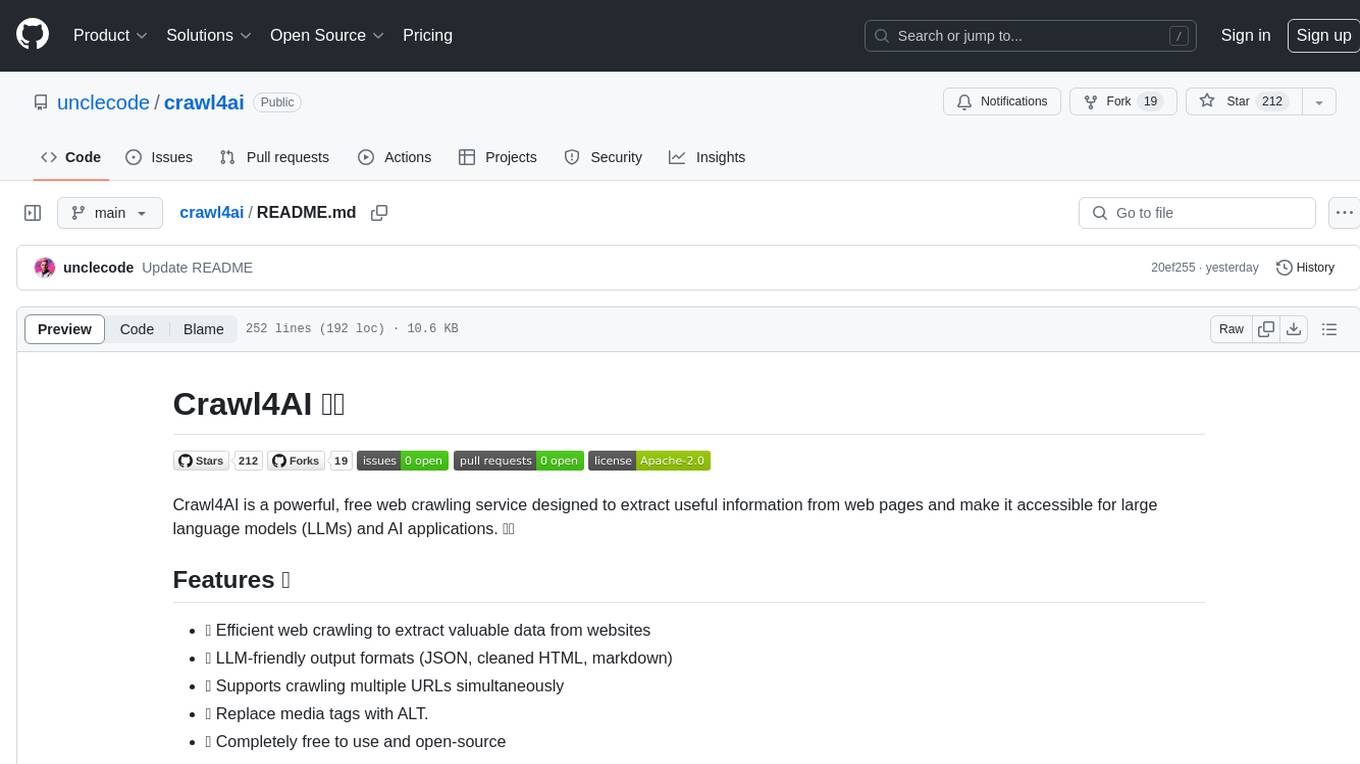
crawl4ai
Crawl4AI is a powerful and free web crawling service that extracts valuable data from websites and provides LLM-friendly output formats. It supports crawling multiple URLs simultaneously, replaces media tags with ALT, and is completely free to use and open-source. Users can integrate Crawl4AI into Python projects as a library or run it as a standalone local server. The tool allows users to crawl and extract data from specified URLs using different providers and models, with options to include raw HTML content, force fresh crawls, and extract meaningful text blocks. Configuration settings can be adjusted in the `crawler/config.py` file to customize providers, API keys, chunk processing, and word thresholds. Contributions to Crawl4AI are welcome from the open-source community to enhance its value for AI enthusiasts and developers.
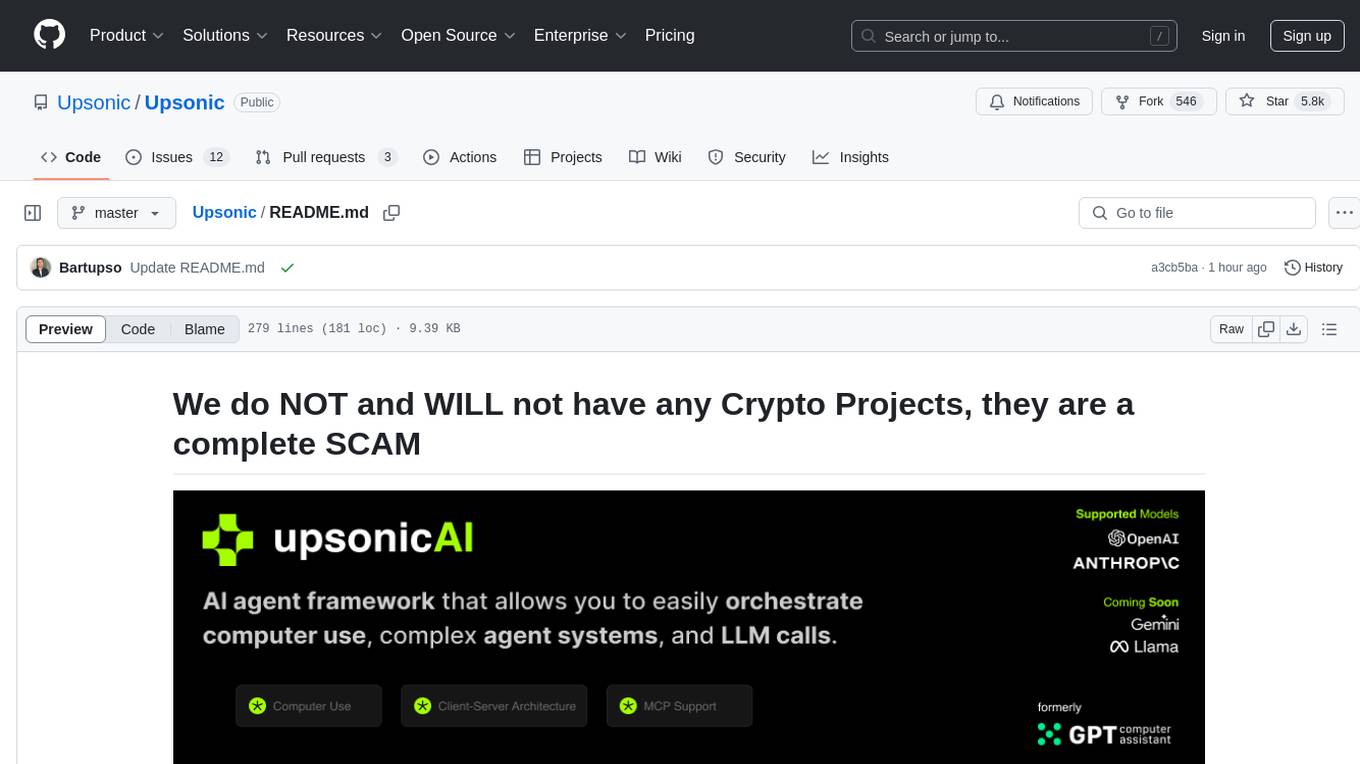
gpt-computer-assistant
GPT Computer Assistant (GCA) is an open-source framework designed to build vertical AI agents that can automate tasks on Windows, macOS, and Ubuntu systems. It leverages the Model Context Protocol (MCP) and its own modules to mimic human-like actions and achieve advanced capabilities. With GCA, users can empower themselves to accomplish more in less time by automating tasks like updating dependencies, analyzing databases, and configuring cloud security settings.
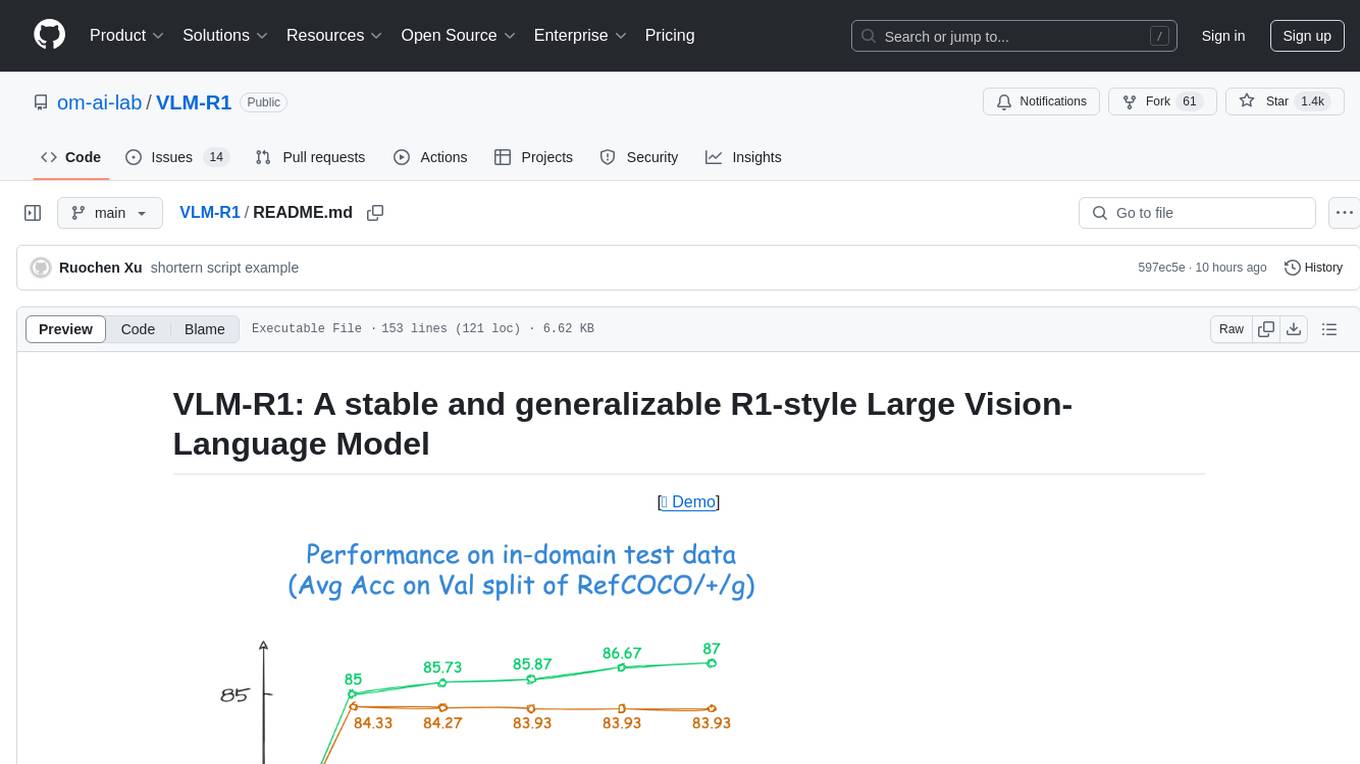
VLM-R1
VLM-R1 is a stable and generalizable R1-style Large Vision-Language Model proposed for Referring Expression Comprehension (REC) task. It compares R1 and SFT approaches, showing R1 model's steady improvement on out-of-domain test data. The project includes setup instructions, training steps for GRPO and SFT models, support for user data loading, and evaluation process. Acknowledgements to various open-source projects and resources are mentioned. The project aims to provide a reliable and versatile solution for vision-language tasks.
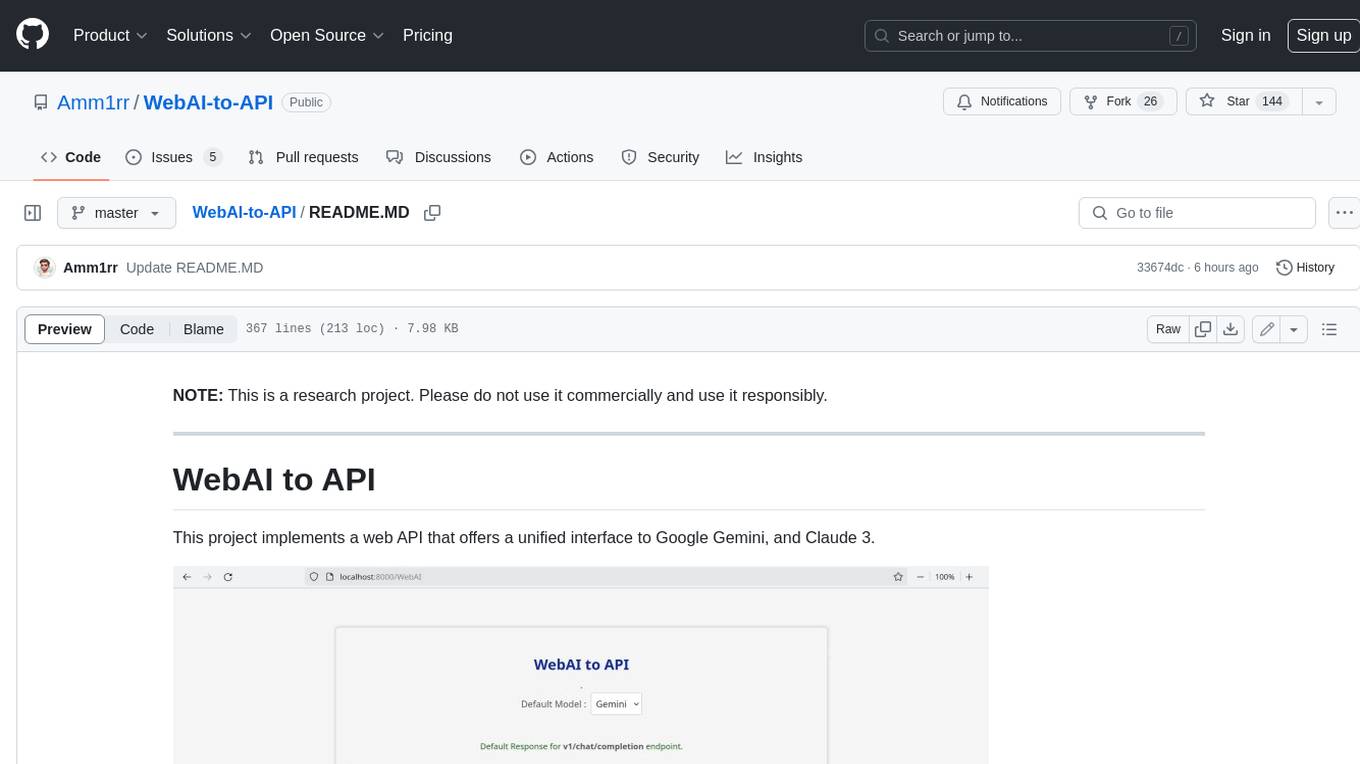
WebAI-to-API
This project implements a web API that offers a unified interface to Google Gemini and Claude 3. It provides a self-hosted, lightweight, and scalable solution for accessing these AI models through a streaming API. The API supports both Claude and Gemini models, allowing users to interact with them in real-time. The project includes a user-friendly web UI for configuration and documentation, making it easy to get started and explore the capabilities of the API.
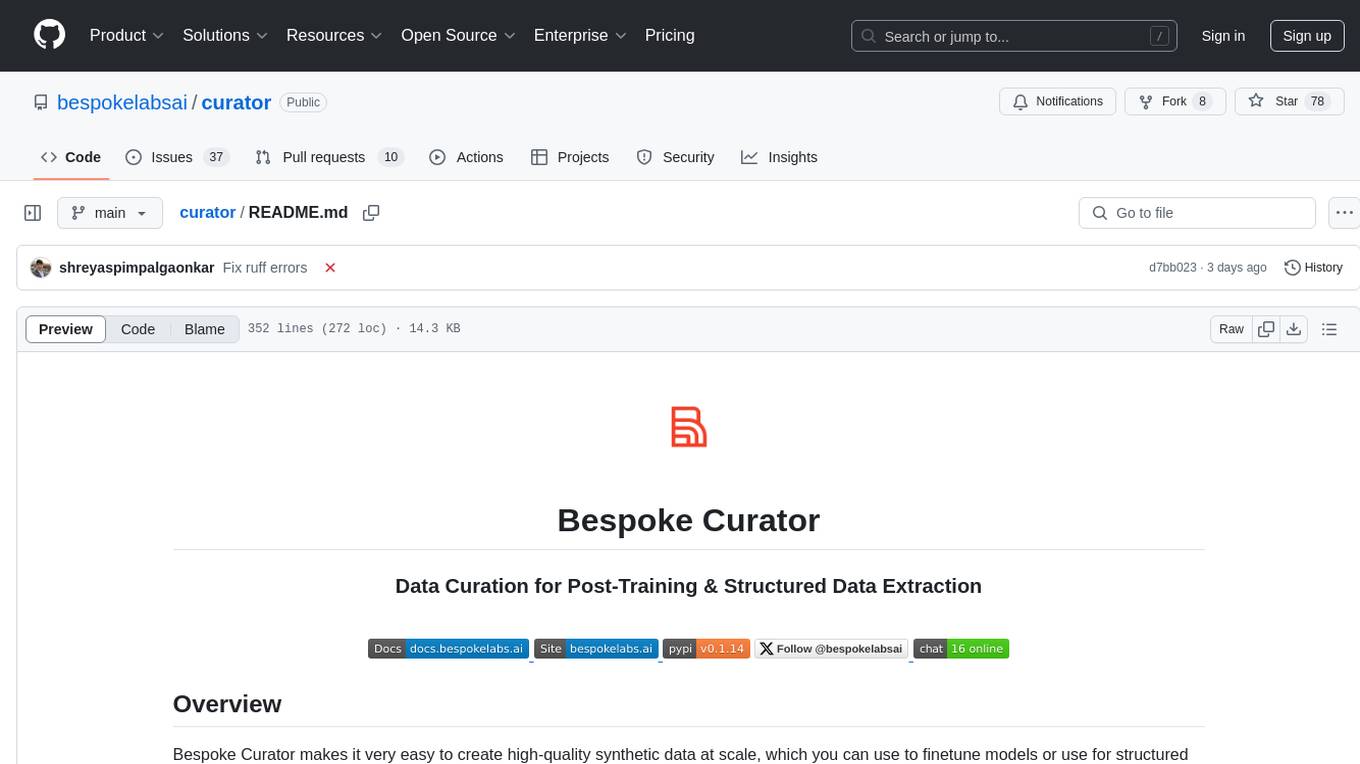
curator
Bespoke Curator is an open-source tool for data curation and structured data extraction. It provides a Python library for generating synthetic data at scale, with features like programmability, performance optimization, caching, and integration with HuggingFace Datasets. The tool includes a Curator Viewer for dataset visualization and offers a rich set of functionalities for creating and refining data generation strategies.
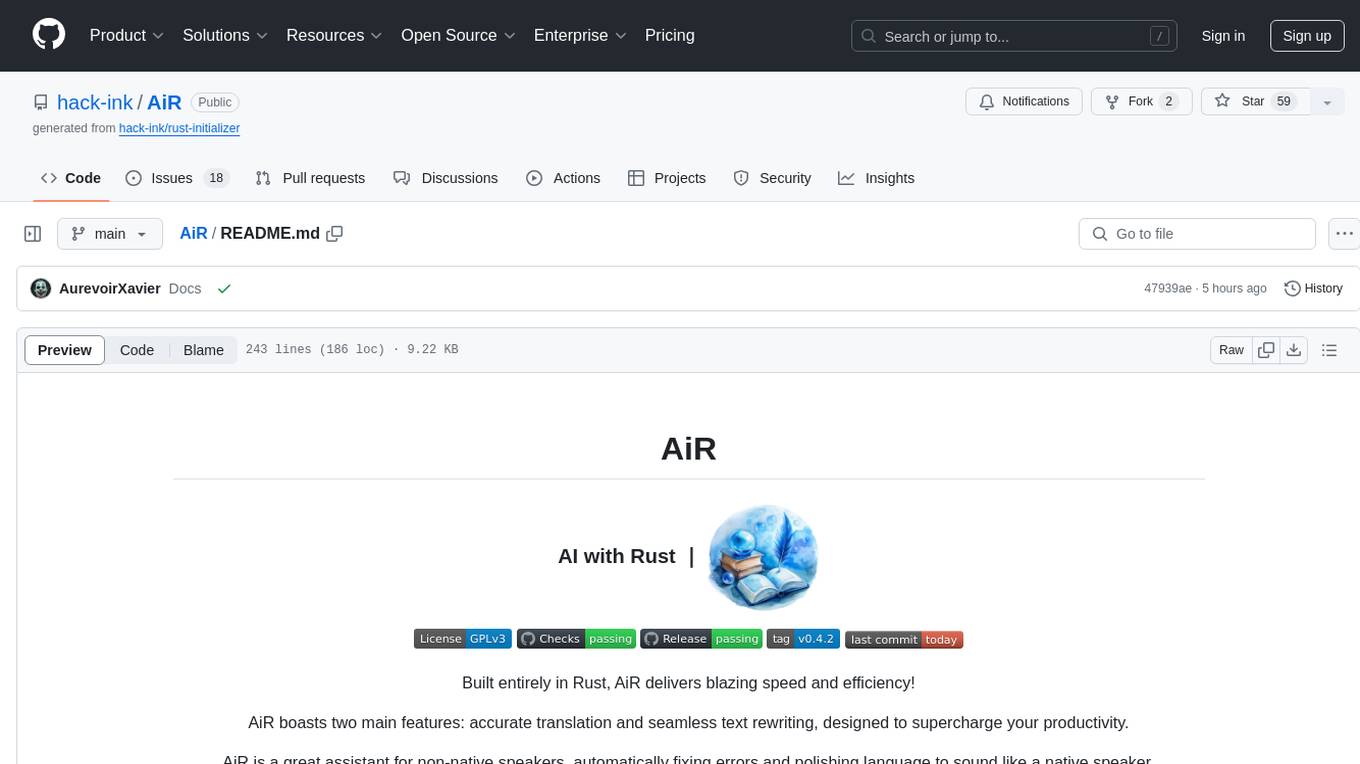
AiR
AiR is an AI tool built entirely in Rust that delivers blazing speed and efficiency. It features accurate translation and seamless text rewriting to supercharge productivity. AiR is designed to assist non-native speakers by automatically fixing errors and polishing language to sound like a native speaker. The tool is under heavy development with more features on the horizon.
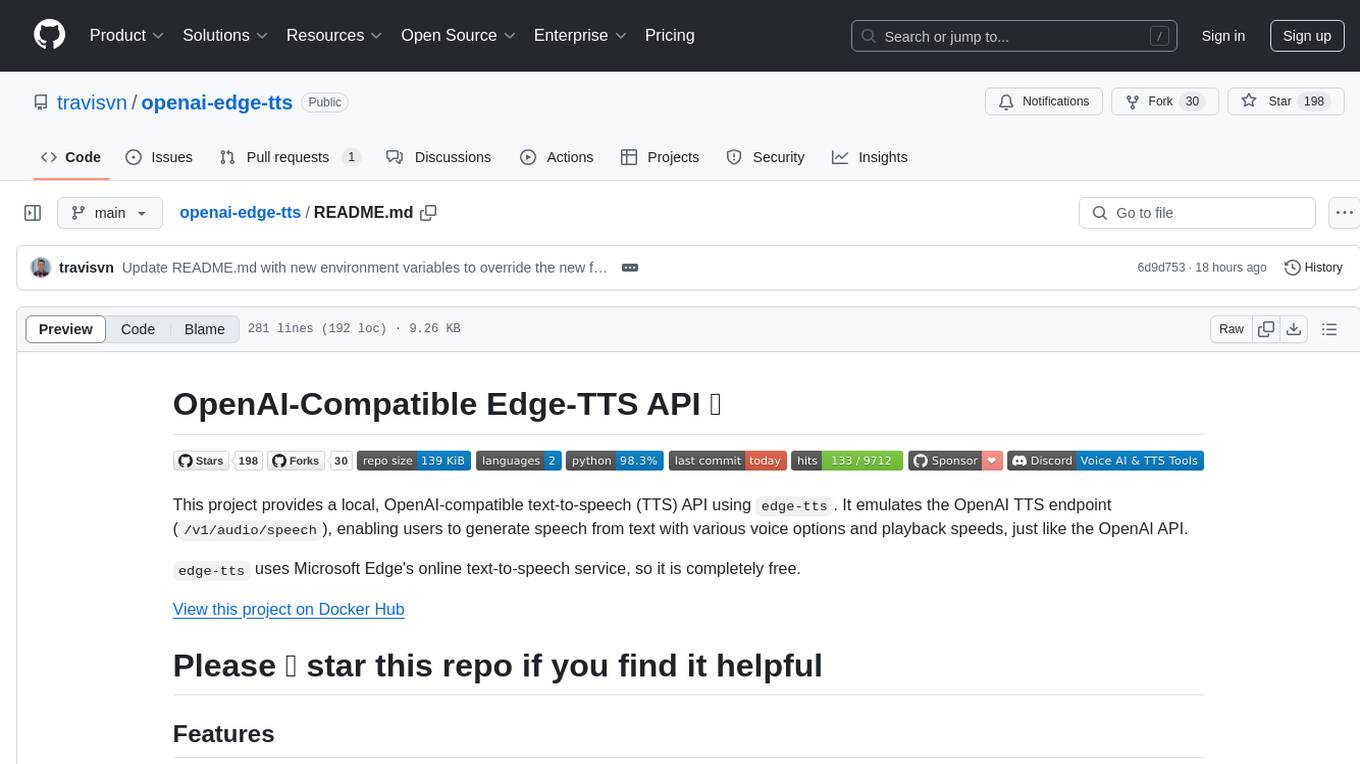
openai-edge-tts
This project provides a local, OpenAI-compatible text-to-speech (TTS) API using `edge-tts`. It emulates the OpenAI TTS endpoint (`/v1/audio/speech`), enabling users to generate speech from text with various voice options and playback speeds, just like the OpenAI API. `edge-tts` uses Microsoft Edge's online text-to-speech service, making it completely free. The project supports multiple audio formats, adjustable playback speed, and voice selection options, providing a flexible and customizable TTS solution for users.
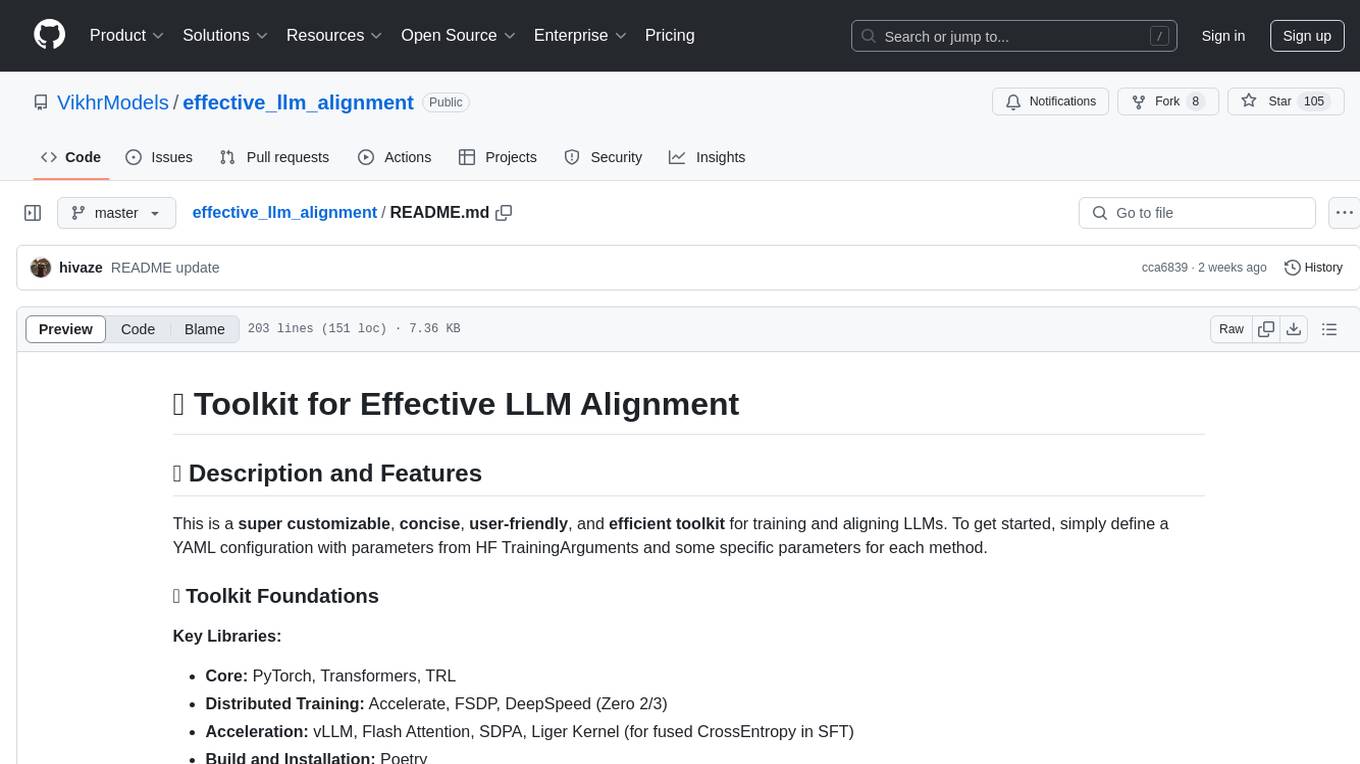
effective_llm_alignment
This is a super customizable, concise, user-friendly, and efficient toolkit for training and aligning LLMs. It provides support for various methods such as SFT, Distillation, DPO, ORPO, CPO, SimPO, SMPO, Non-pair Reward Modeling, Special prompts basket format, Rejection Sampling, Scoring using RM, Effective FAISS Map-Reduce Deduplication, LLM scoring using RM, NER, CLIP, Classification, and STS. The toolkit offers key libraries like PyTorch, Transformers, TRL, Accelerate, FSDP, DeepSpeed, and tools for result logging with wandb or clearml. It allows mixing datasets, generation and logging in wandb/clearml, vLLM batched generation, and aligns models using the SMPO method.
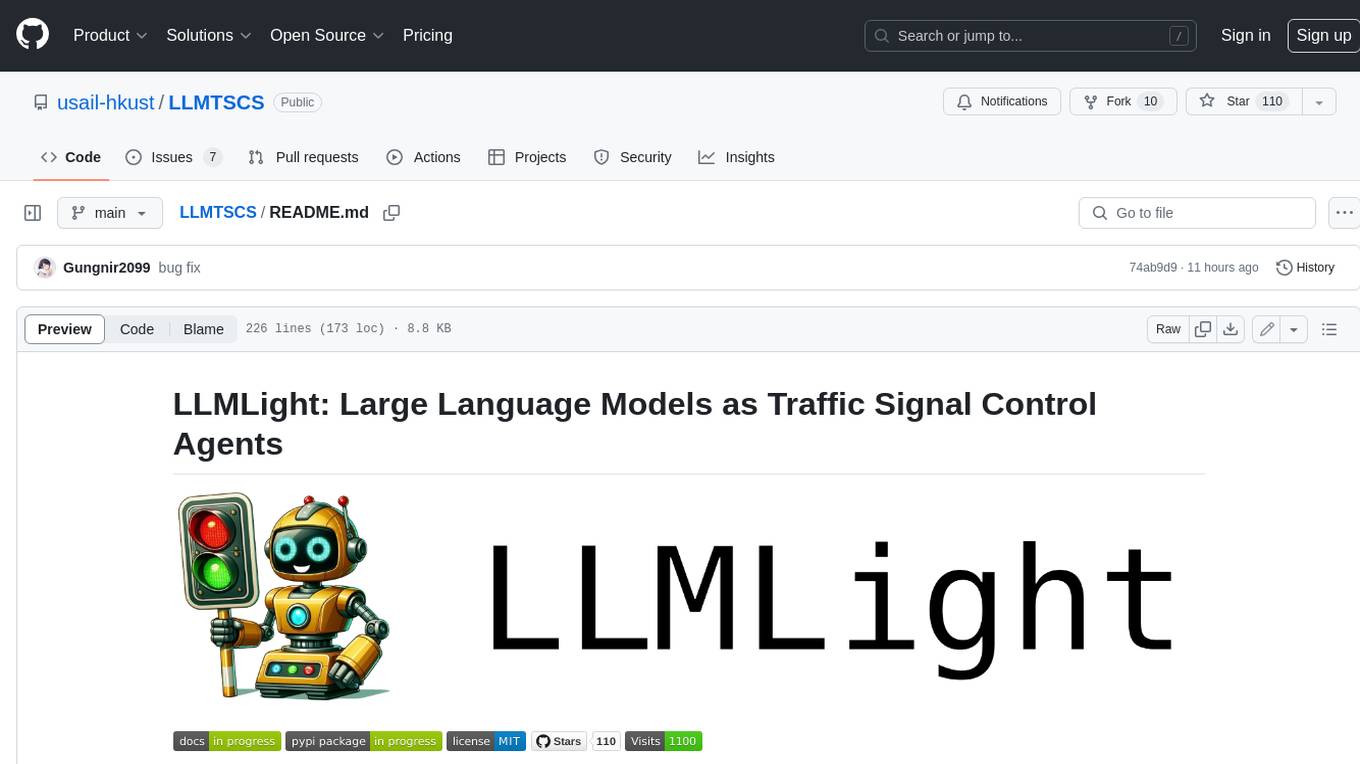
LLMTSCS
LLMLight is a novel framework that employs Large Language Models (LLMs) as decision-making agents for Traffic Signal Control (TSC). The framework leverages the advanced generalization capabilities of LLMs to engage in a reasoning and decision-making process akin to human intuition for effective traffic control. LLMLight has been demonstrated to be remarkably effective, generalizable, and interpretable against various transportation-based and RL-based baselines on nine real-world and synthetic datasets.
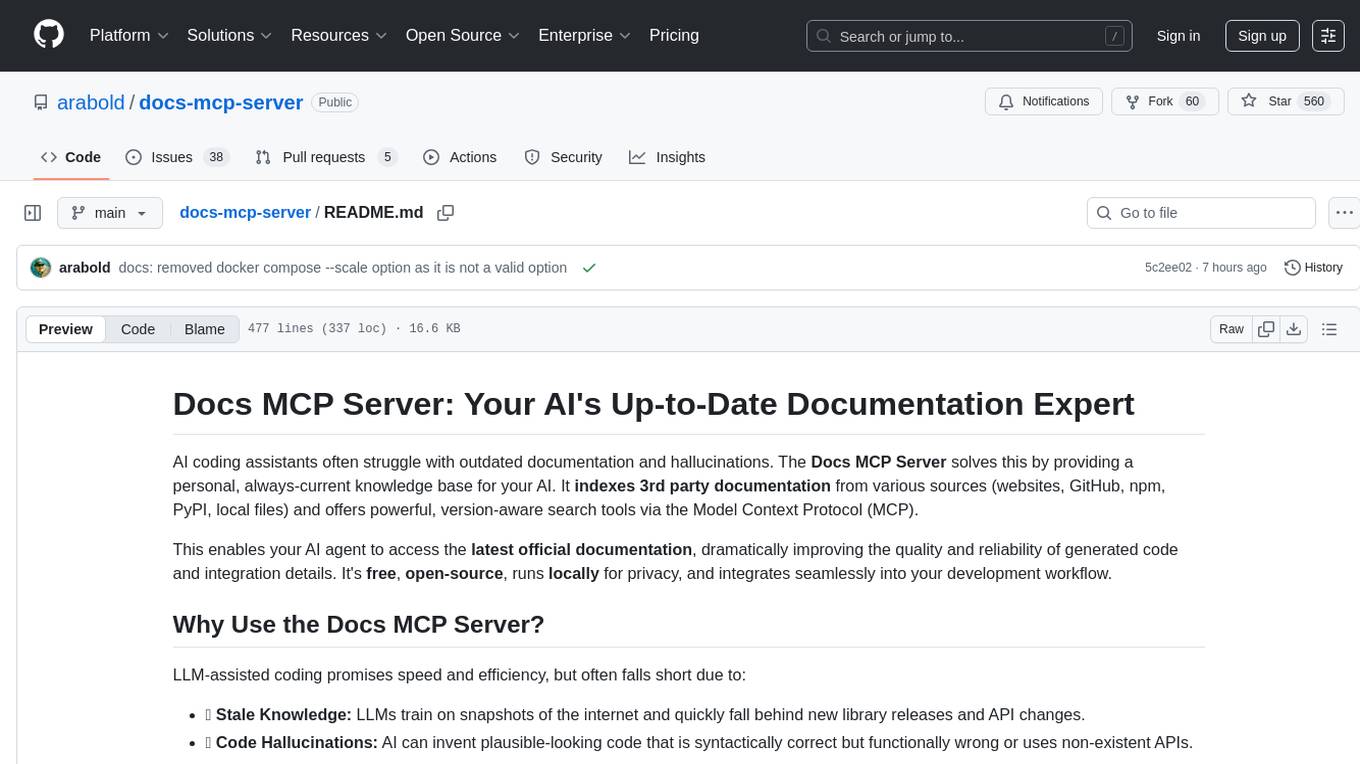
docs-mcp-server
The docs-mcp-server repository contains the server-side code for the documentation management system. It provides functionalities for managing, storing, and retrieving documentation files. Users can upload, update, and delete documents through the server. The server also supports user authentication and authorization to ensure secure access to the documentation system. Additionally, the server includes APIs for integrating with other systems and tools, making it a versatile solution for managing documentation in various projects and organizations.
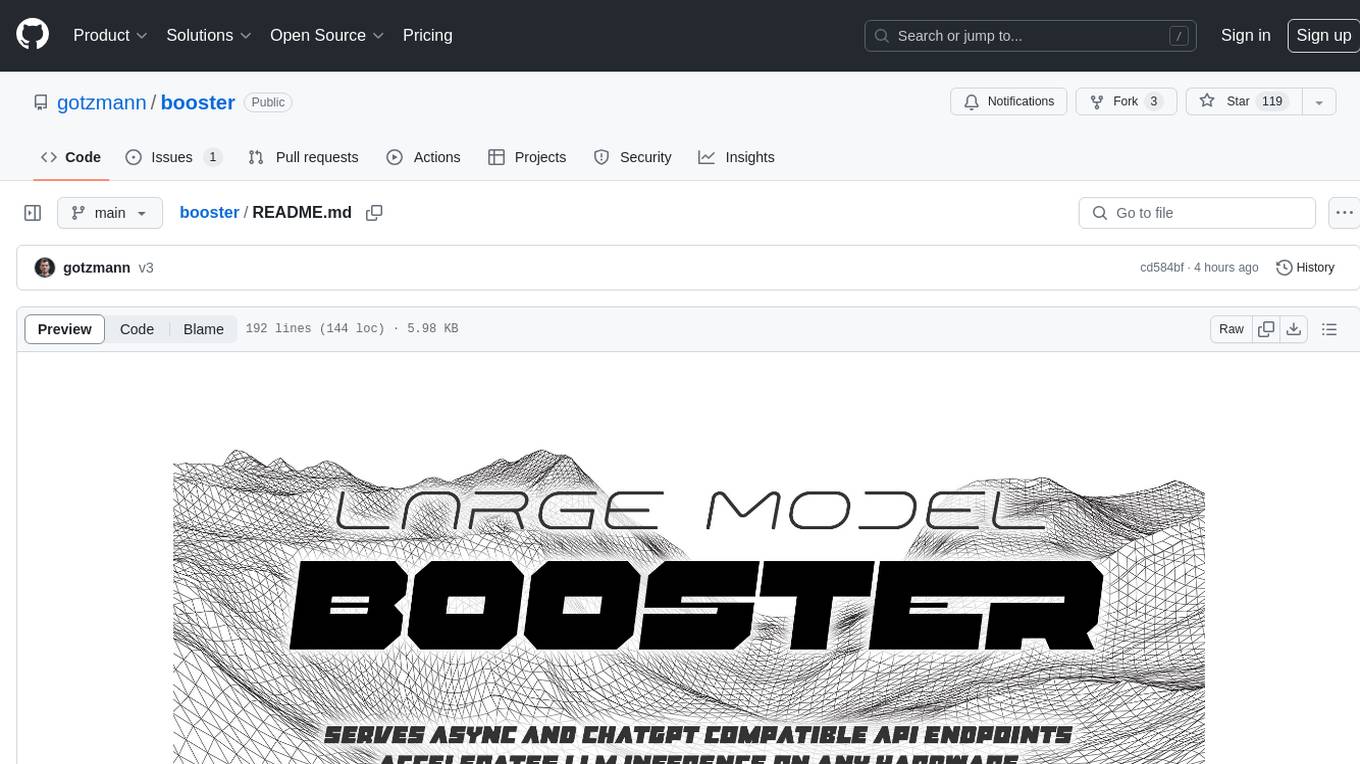
booster
Booster is a powerful inference accelerator designed for scaling large language models within production environments or for experimental purposes. It is built with performance and scaling in mind, supporting various CPUs and GPUs, including Nvidia CUDA, Apple Metal, and OpenCL cards. The tool can split large models across multiple GPUs, offering fast inference on machines with beefy GPUs. It supports both regular FP16/FP32 models and quantised versions, along with popular LLM architectures. Additionally, Booster features proprietary Janus Sampling for code generation and non-English languages.
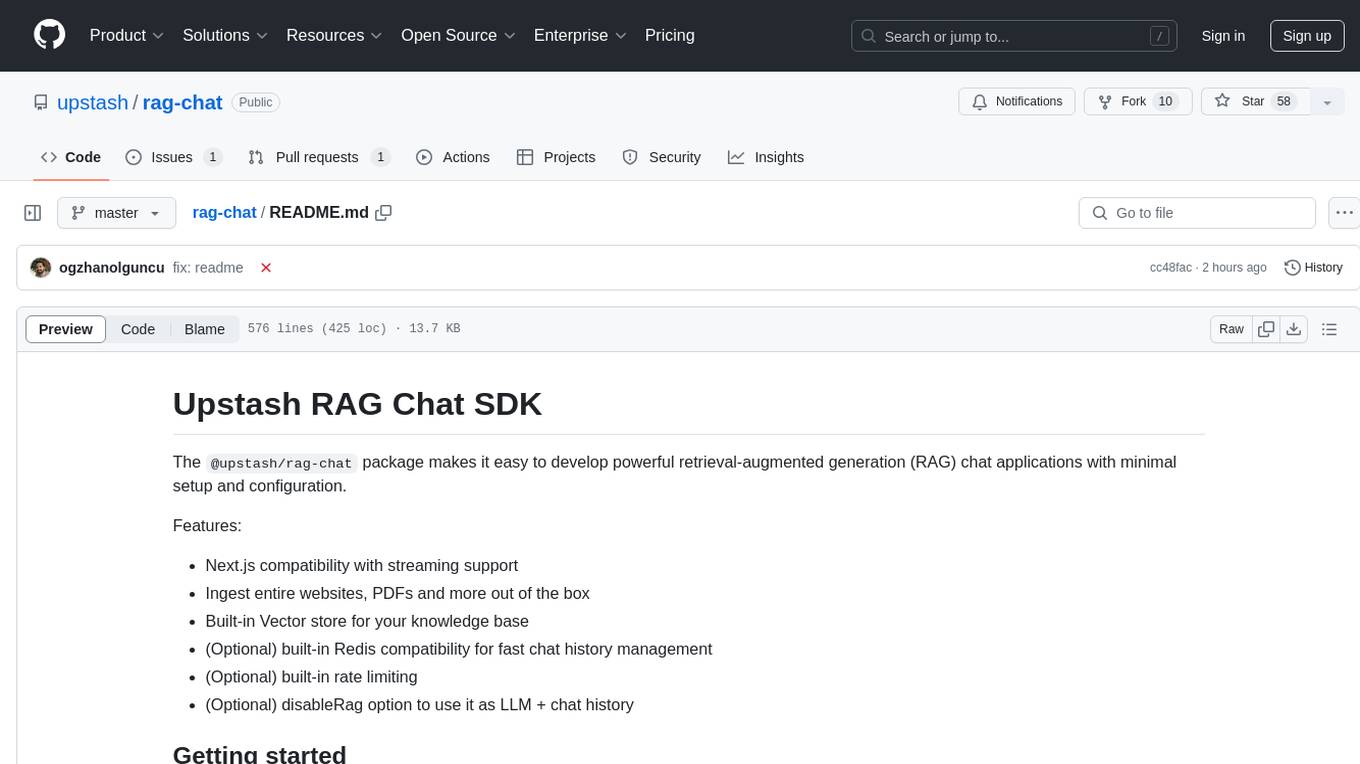
rag-chat
The `@upstash/rag-chat` package simplifies the development of retrieval-augmented generation (RAG) chat applications by providing Next.js compatibility with streaming support, built-in vector store, optional Redis compatibility for fast chat history management, rate limiting, and disableRag option. Users can easily set up the environment variables and initialize RAGChat to interact with AI models, manage knowledge base, chat history, and enable debugging features. Advanced configuration options allow customization of RAGChat instance with built-in rate limiting, observability via Helicone, and integration with Next.js route handlers and Vercel AI SDK. The package supports OpenAI models, Upstash-hosted models, and custom providers like TogetherAi and Replicate.
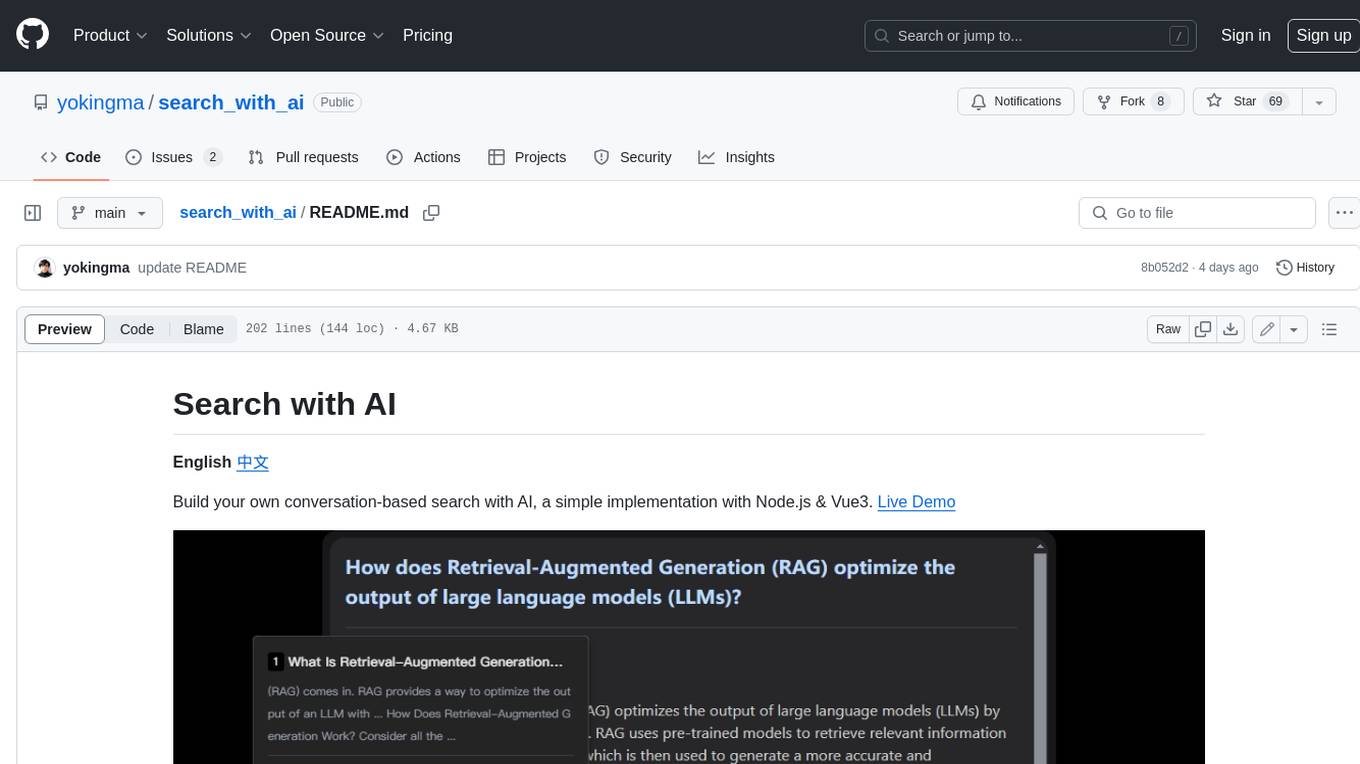
search_with_ai
Build your own conversation-based search with AI, a simple implementation with Node.js & Vue3. Live Demo Features: * Built-in support for LLM: OpenAI, Google, Lepton, Ollama(Free) * Built-in support for search engine: Bing, Sogou, Google, SearXNG(Free) * Customizable pretty UI interface * Support dark mode * Support mobile display * Support local LLM with Ollama * Support i18n * Support Continue Q&A with contexts.
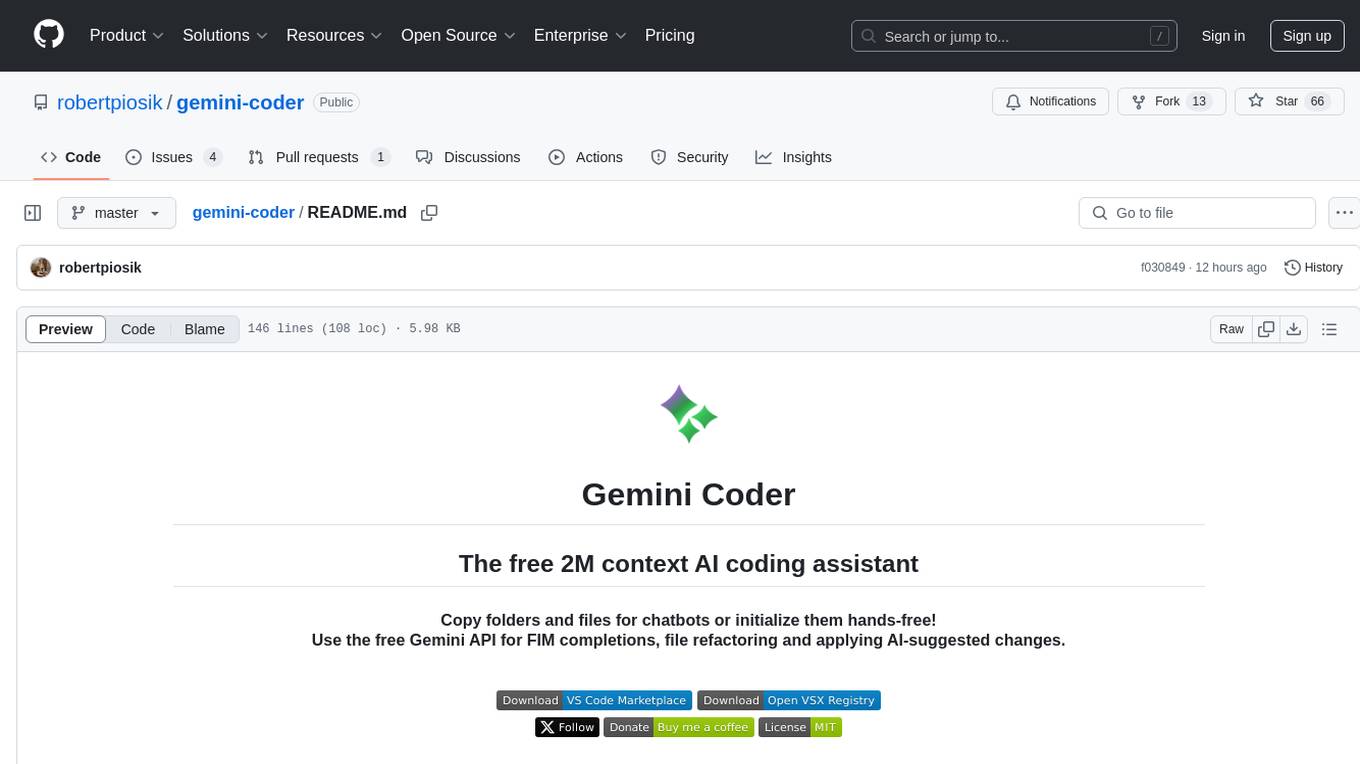
gemini-coder
Gemini Coder is a free 2M context AI coding assistant that allows users to conveniently copy folders and files for chatbots. It provides FIM completions, file refactoring, and AI-suggested changes. The extension is versatile, private, and lightweight, offering unmatched accuracy, speed, and cost in AI assistance. Users have full control over the context and coding conventions included, ensuring high performance and signal to noise ratio. Gemini Coder supports various chatbots and provides quick start guides for chat and FIM completions. It also offers commands for FIM completions, refactoring, applying changes, chat, and context copying. Users can set up custom model providers for API features and contribute to the project through pull requests or discussions. The tool is licensed under the MIT License.
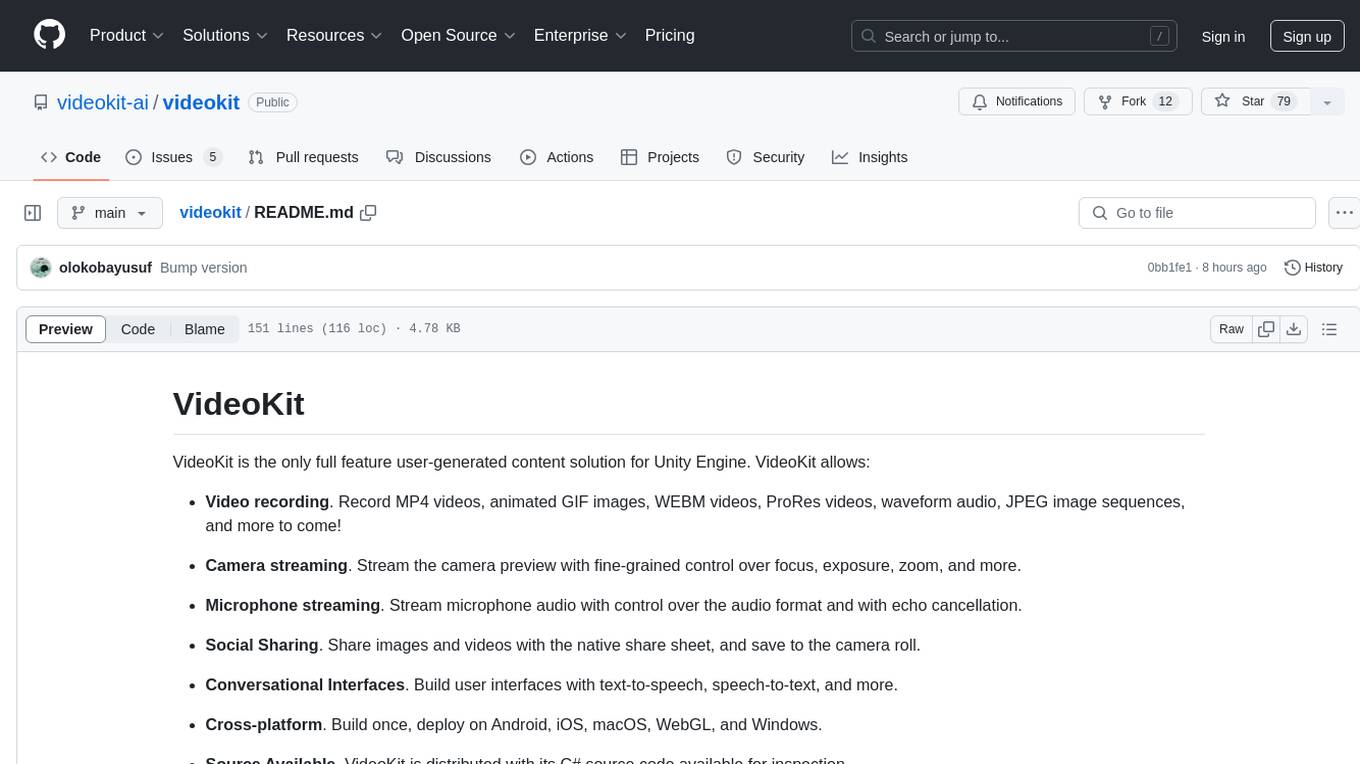
videokit
VideoKit is a full-featured user-generated content solution for Unity Engine, enabling video recording, camera streaming, microphone streaming, social sharing, and conversational interfaces. It is cross-platform, with C# source code available for inspection. Users can share media, save to camera roll, pick from camera roll, stream camera preview, record videos, remove background, caption audio, and convert text commands. VideoKit requires Unity 2022.3+ and supports Android, iOS, macOS, Windows, and WebGL platforms.
For similar tasks

HPT
Hyper-Pretrained Transformers (HPT) is a novel multimodal LLM framework from HyperGAI, trained for vision-language models capable of understanding both textual and visual inputs. The repository contains the open-source implementation of inference code to reproduce the evaluation results of HPT Air on different benchmarks. HPT has achieved competitive results with state-of-the-art models on various multimodal LLM benchmarks. It offers models like HPT 1.5 Air and HPT 1.0 Air, providing efficient solutions for vision-and-language tasks.
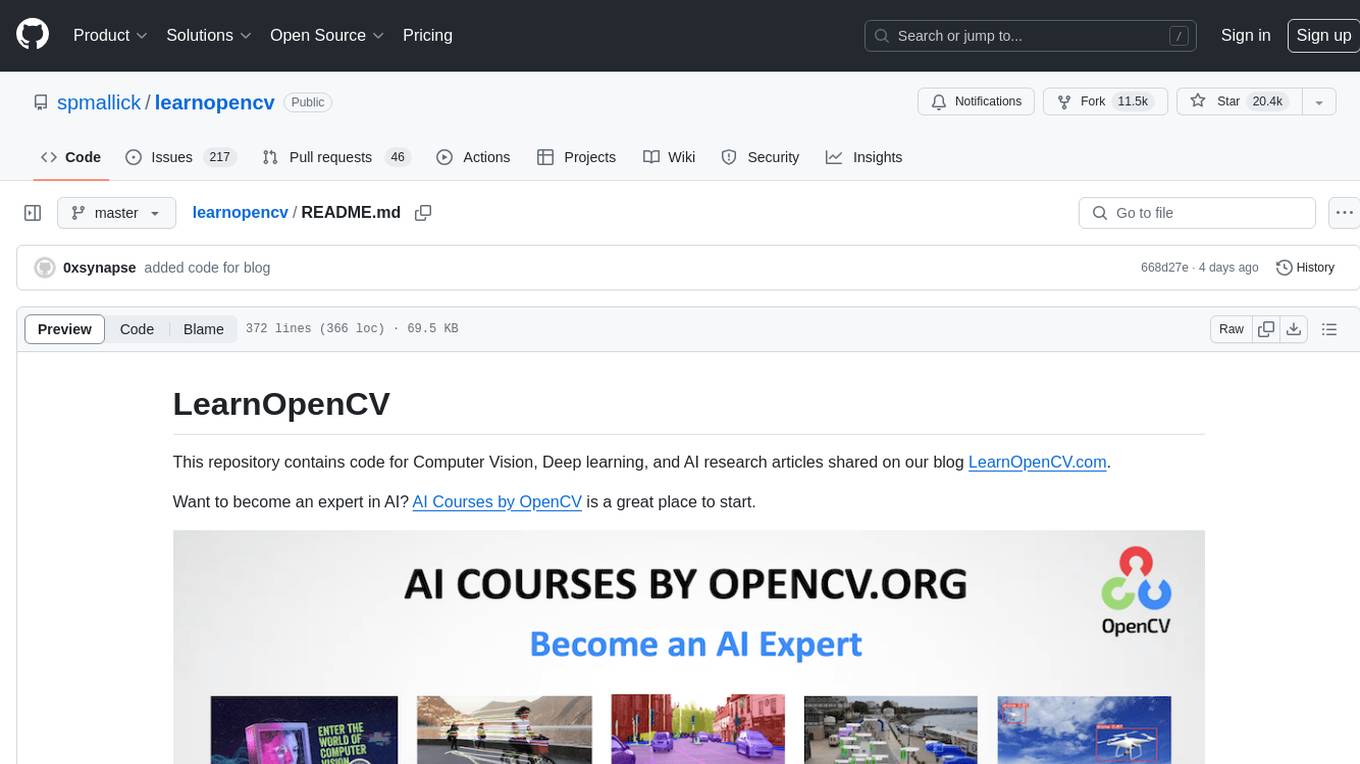
learnopencv
LearnOpenCV is a repository containing code for Computer Vision, Deep learning, and AI research articles shared on the blog LearnOpenCV.com. It serves as a resource for individuals looking to enhance their expertise in AI through various courses offered by OpenCV. The repository includes a wide range of topics such as image inpainting, instance segmentation, robotics, deep learning models, and more, providing practical implementations and code examples for readers to explore and learn from.
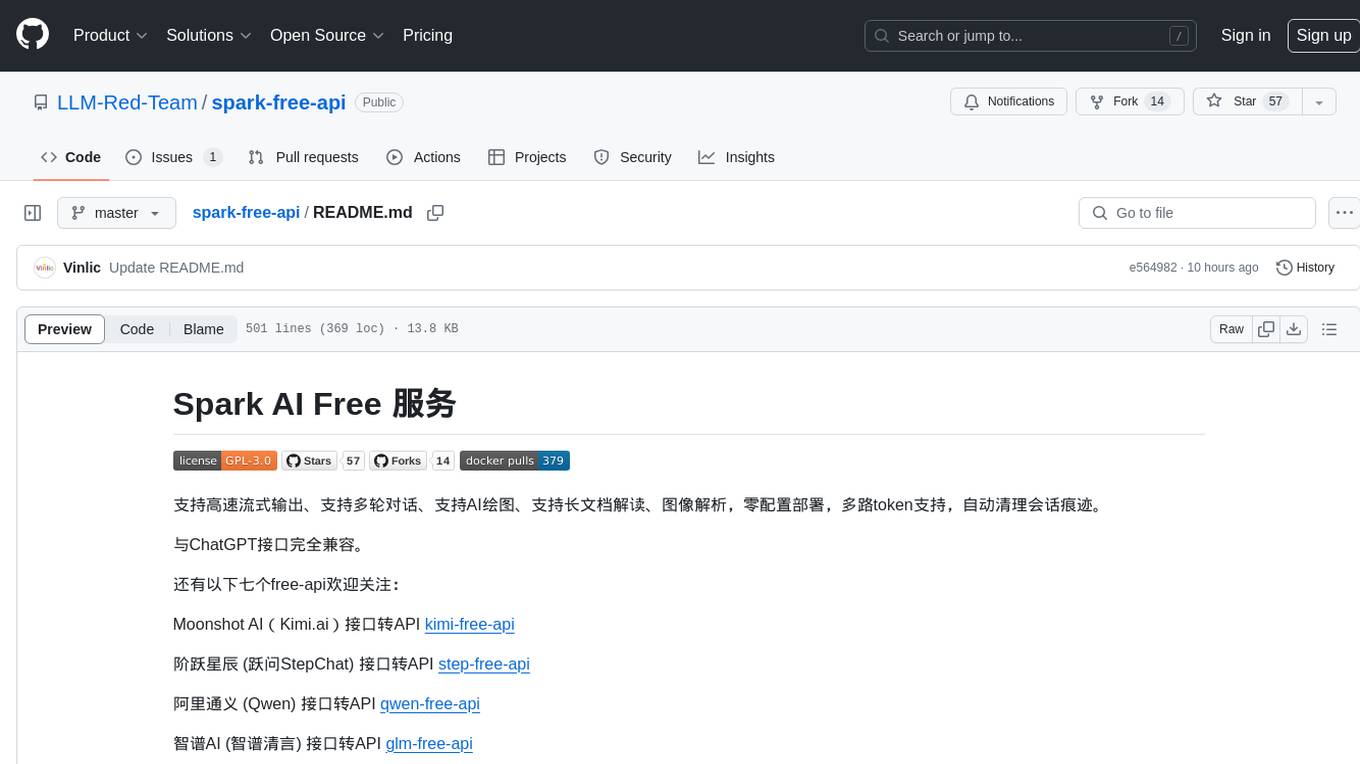
spark-free-api
Spark AI Free 服务 provides high-speed streaming output, multi-turn dialogue support, AI drawing support, long document interpretation, and image parsing. It offers zero-configuration deployment, multi-token support, and automatic session trace cleaning. It is fully compatible with the ChatGPT interface. The repository includes multiple free-api projects for various AI services. Users can access the API for tasks such as chat completions, AI drawing, document interpretation, image analysis, and ssoSessionId live checking. The project also provides guidelines for deployment using Docker, Docker-compose, Render, Vercel, and native deployment methods. It recommends using custom clients for faster and simpler access to the free-api series projects.
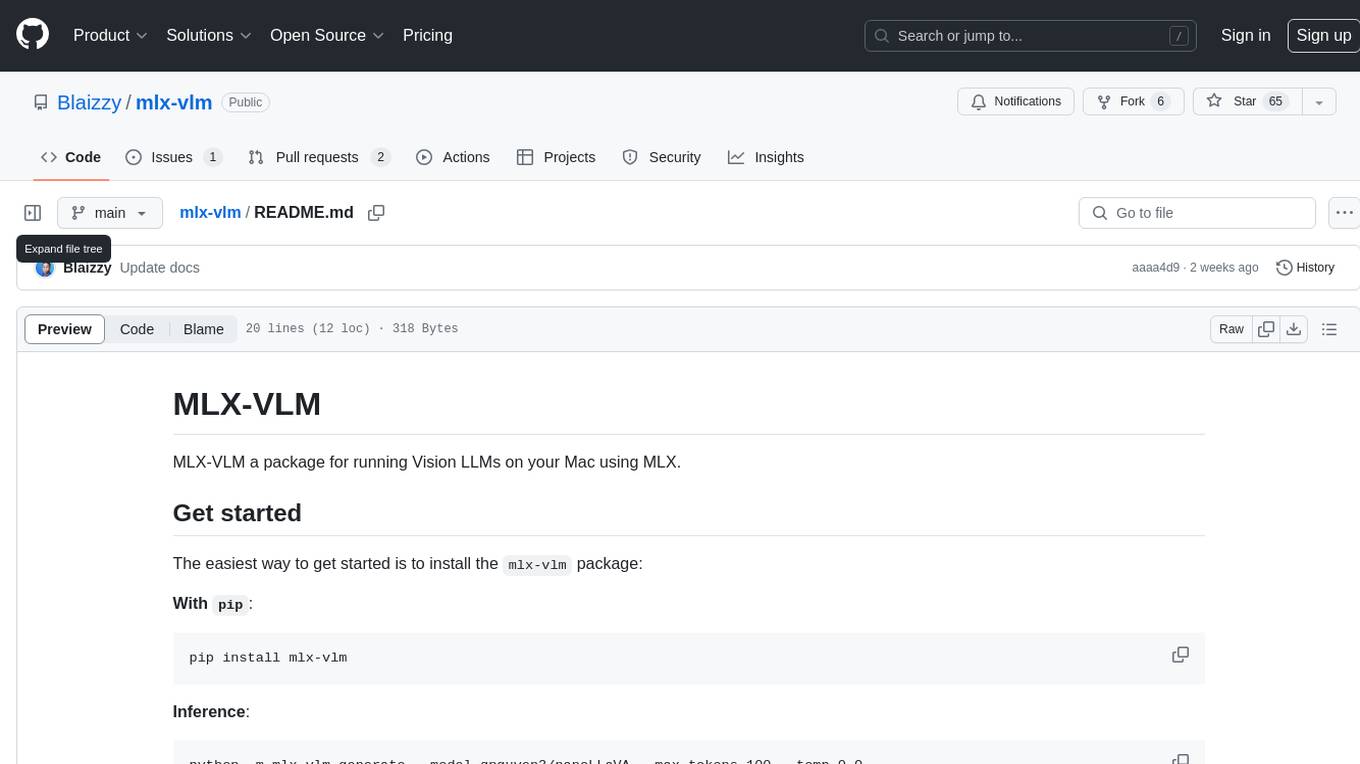
mlx-vlm
MLX-VLM is a package designed for running Vision LLMs on Mac systems using MLX. It provides a convenient way to install and utilize the package for processing large language models related to vision tasks. The tool simplifies the process of running LLMs on Mac computers, offering a seamless experience for users interested in leveraging MLX for vision-related projects.
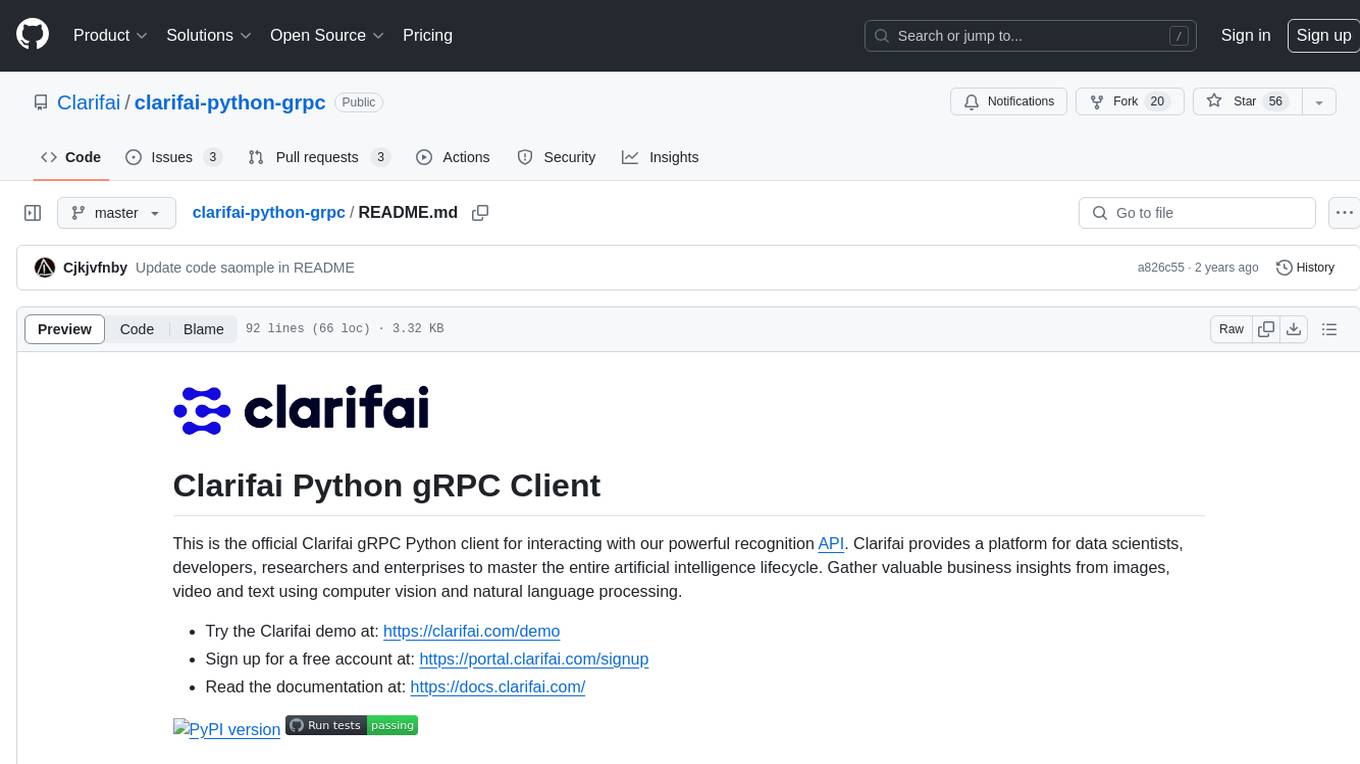
clarifai-python-grpc
This is the official Clarifai gRPC Python client for interacting with their recognition API. Clarifai offers a platform for data scientists, developers, researchers, and enterprises to utilize artificial intelligence for image, video, and text analysis through computer vision and natural language processing. The client allows users to authenticate, predict concepts in images, and access various functionalities provided by the Clarifai API. It follows a versioning scheme that aligns with the backend API updates and includes specific instructions for installation and troubleshooting. Users can explore the Clarifai demo, sign up for an account, and refer to the documentation for detailed information.
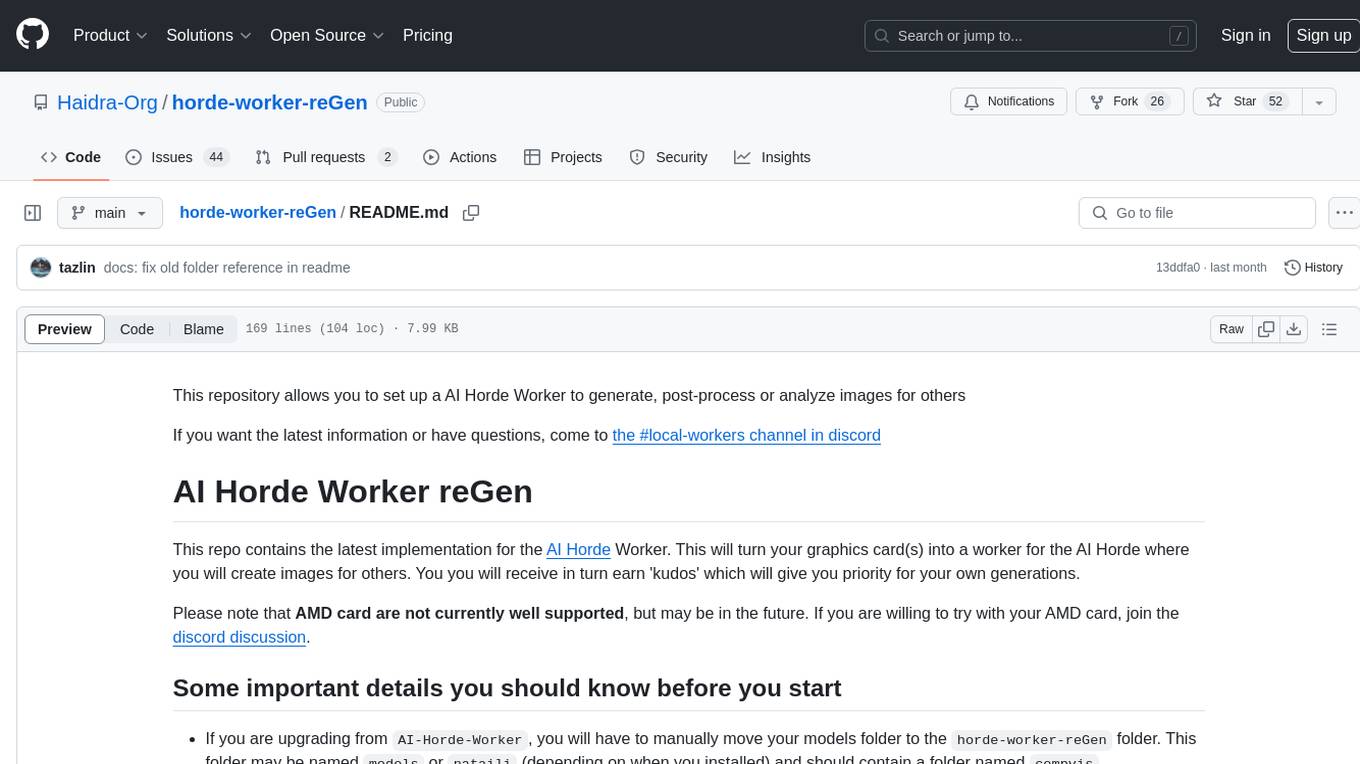
horde-worker-reGen
This repository provides the latest implementation for the AI Horde Worker, allowing users to utilize their graphics card(s) to generate, post-process, or analyze images for others. It offers a platform where users can create images and earn 'kudos' in return, granting priority for their own image generations. The repository includes important details for setup, recommendations for system configurations, instructions for installation on Windows and Linux, basic usage guidelines, and information on updating the AI Horde Worker. Users can also run the worker with multiple GPUs and receive notifications for updates through Discord. Additionally, the repository contains models that are licensed under the CreativeML OpenRAIL License.
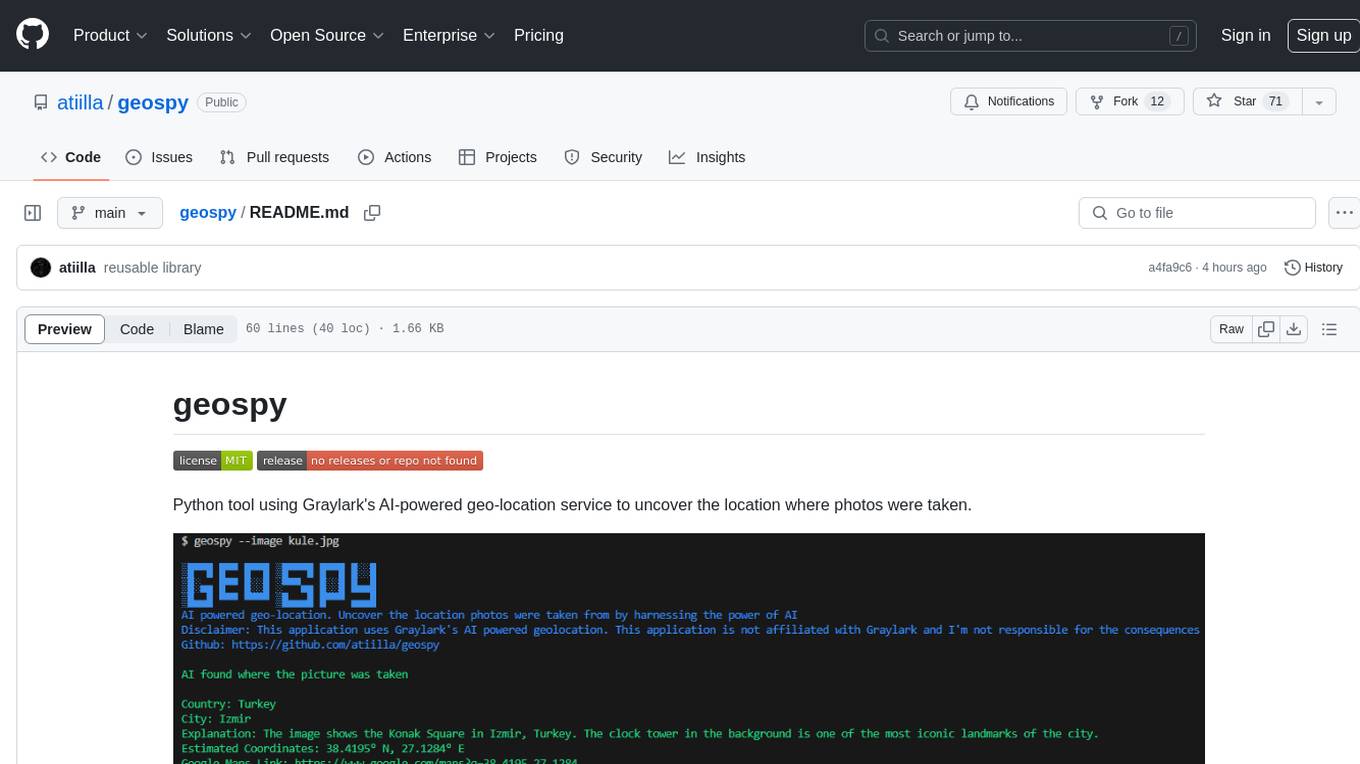
geospy
Geospy is a Python tool that utilizes Graylark's AI-powered geolocation service to determine the location where photos were taken. It allows users to analyze images and retrieve information such as country, city, explanation, coordinates, and Google Maps links. The tool provides a seamless way to integrate geolocation services into various projects and applications.
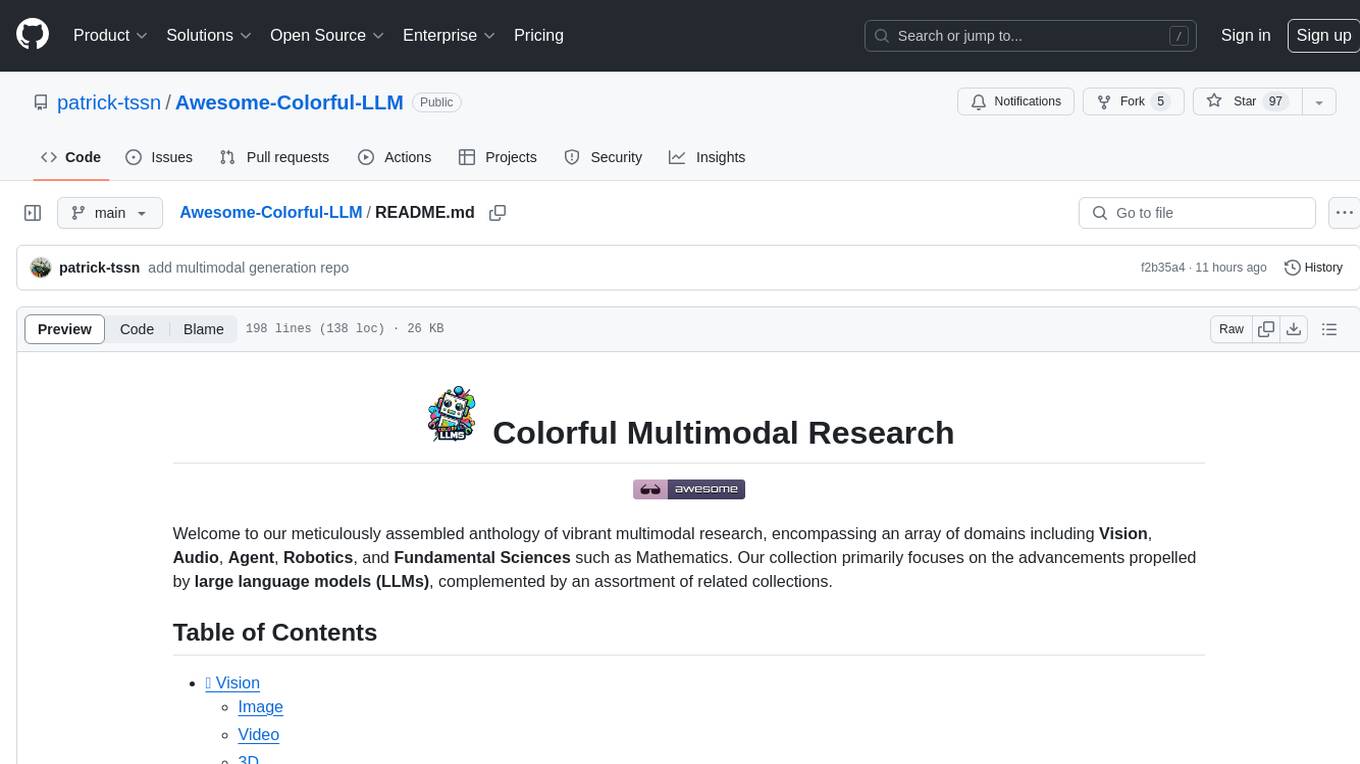
Awesome-Colorful-LLM
Awesome-Colorful-LLM is a meticulously assembled anthology of vibrant multimodal research focusing on advancements propelled by large language models (LLMs) in domains such as Vision, Audio, Agent, Robotics, and Fundamental Sciences like Mathematics. The repository contains curated collections of works, datasets, benchmarks, projects, and tools related to LLMs and multimodal learning. It serves as a comprehensive resource for researchers and practitioners interested in exploring the intersection of language models and various modalities for tasks like image understanding, video pretraining, 3D modeling, document understanding, audio analysis, agent learning, robotic applications, and mathematical research.
For similar jobs

weave
Weave is a toolkit for developing Generative AI applications, built by Weights & Biases. With Weave, you can log and debug language model inputs, outputs, and traces; build rigorous, apples-to-apples evaluations for language model use cases; and organize all the information generated across the LLM workflow, from experimentation to evaluations to production. Weave aims to bring rigor, best-practices, and composability to the inherently experimental process of developing Generative AI software, without introducing cognitive overhead.

LLMStack
LLMStack is a no-code platform for building generative AI agents, workflows, and chatbots. It allows users to connect their own data, internal tools, and GPT-powered models without any coding experience. LLMStack can be deployed to the cloud or on-premise and can be accessed via HTTP API or triggered from Slack or Discord.

VisionCraft
The VisionCraft API is a free API for using over 100 different AI models. From images to sound.

kaito
Kaito is an operator that automates the AI/ML inference model deployment in a Kubernetes cluster. It manages large model files using container images, avoids tuning deployment parameters to fit GPU hardware by providing preset configurations, auto-provisions GPU nodes based on model requirements, and hosts large model images in the public Microsoft Container Registry (MCR) if the license allows. Using Kaito, the workflow of onboarding large AI inference models in Kubernetes is largely simplified.

PyRIT
PyRIT is an open access automation framework designed to empower security professionals and ML engineers to red team foundation models and their applications. It automates AI Red Teaming tasks to allow operators to focus on more complicated and time-consuming tasks and can also identify security harms such as misuse (e.g., malware generation, jailbreaking), and privacy harms (e.g., identity theft). The goal is to allow researchers to have a baseline of how well their model and entire inference pipeline is doing against different harm categories and to be able to compare that baseline to future iterations of their model. This allows them to have empirical data on how well their model is doing today, and detect any degradation of performance based on future improvements.

tabby
Tabby is a self-hosted AI coding assistant, offering an open-source and on-premises alternative to GitHub Copilot. It boasts several key features: * Self-contained, with no need for a DBMS or cloud service. * OpenAPI interface, easy to integrate with existing infrastructure (e.g Cloud IDE). * Supports consumer-grade GPUs.

spear
SPEAR (Simulator for Photorealistic Embodied AI Research) is a powerful tool for training embodied agents. It features 300 unique virtual indoor environments with 2,566 unique rooms and 17,234 unique objects that can be manipulated individually. Each environment is designed by a professional artist and features detailed geometry, photorealistic materials, and a unique floor plan and object layout. SPEAR is implemented as Unreal Engine assets and provides an OpenAI Gym interface for interacting with the environments via Python.

Magick
Magick is a groundbreaking visual AIDE (Artificial Intelligence Development Environment) for no-code data pipelines and multimodal agents. Magick can connect to other services and comes with nodes and templates well-suited for intelligent agents, chatbots, complex reasoning systems and realistic characters.




